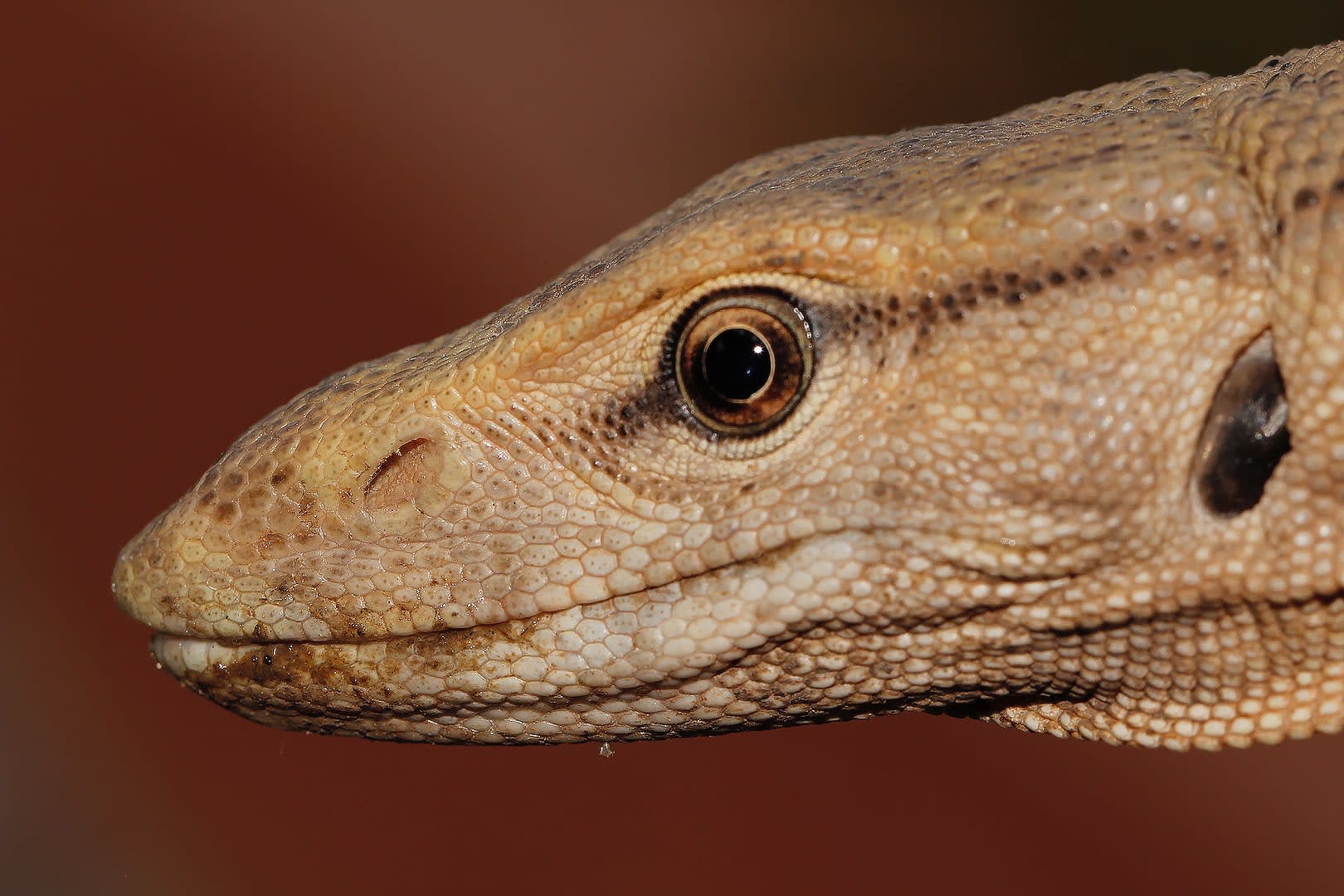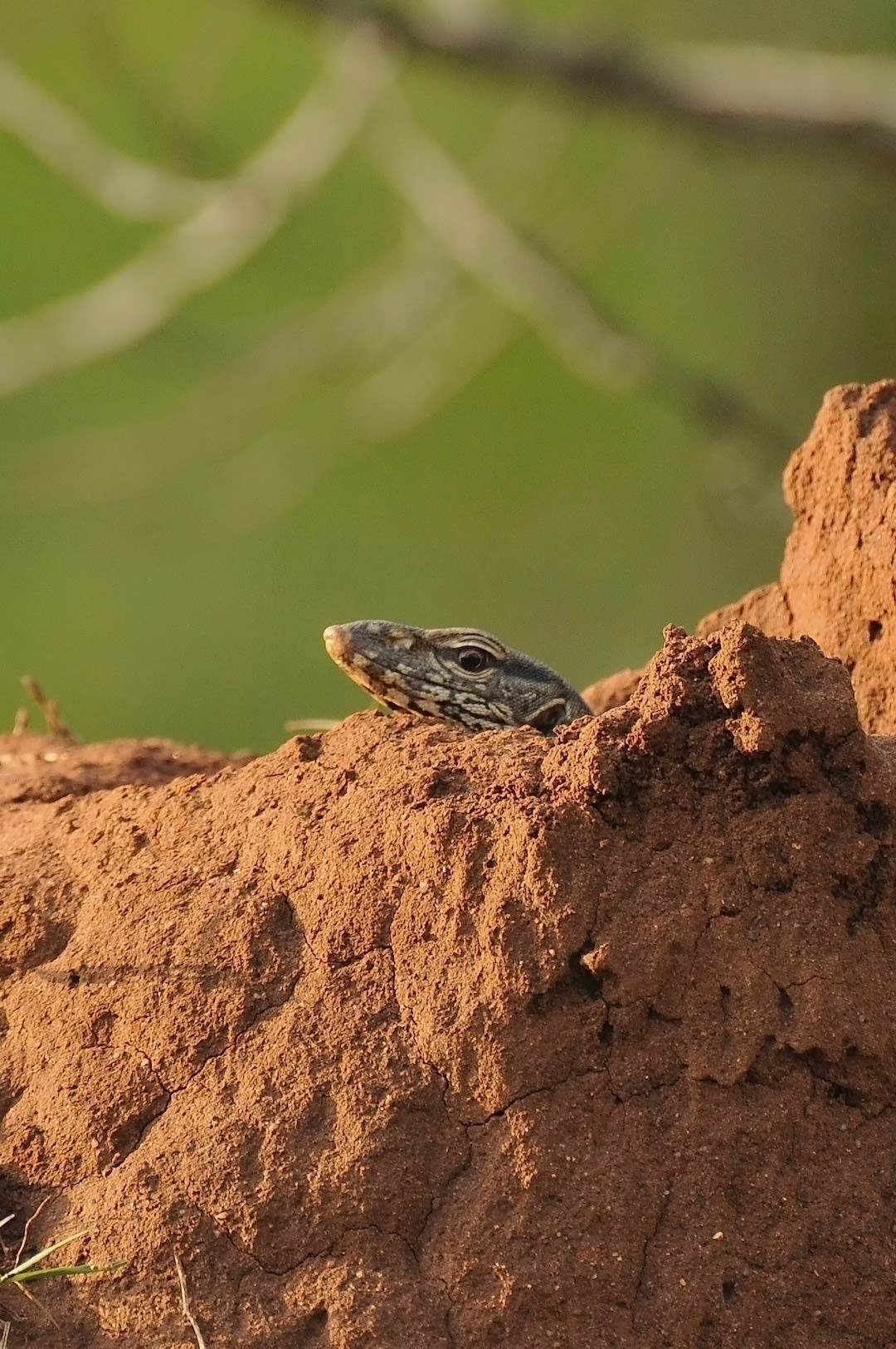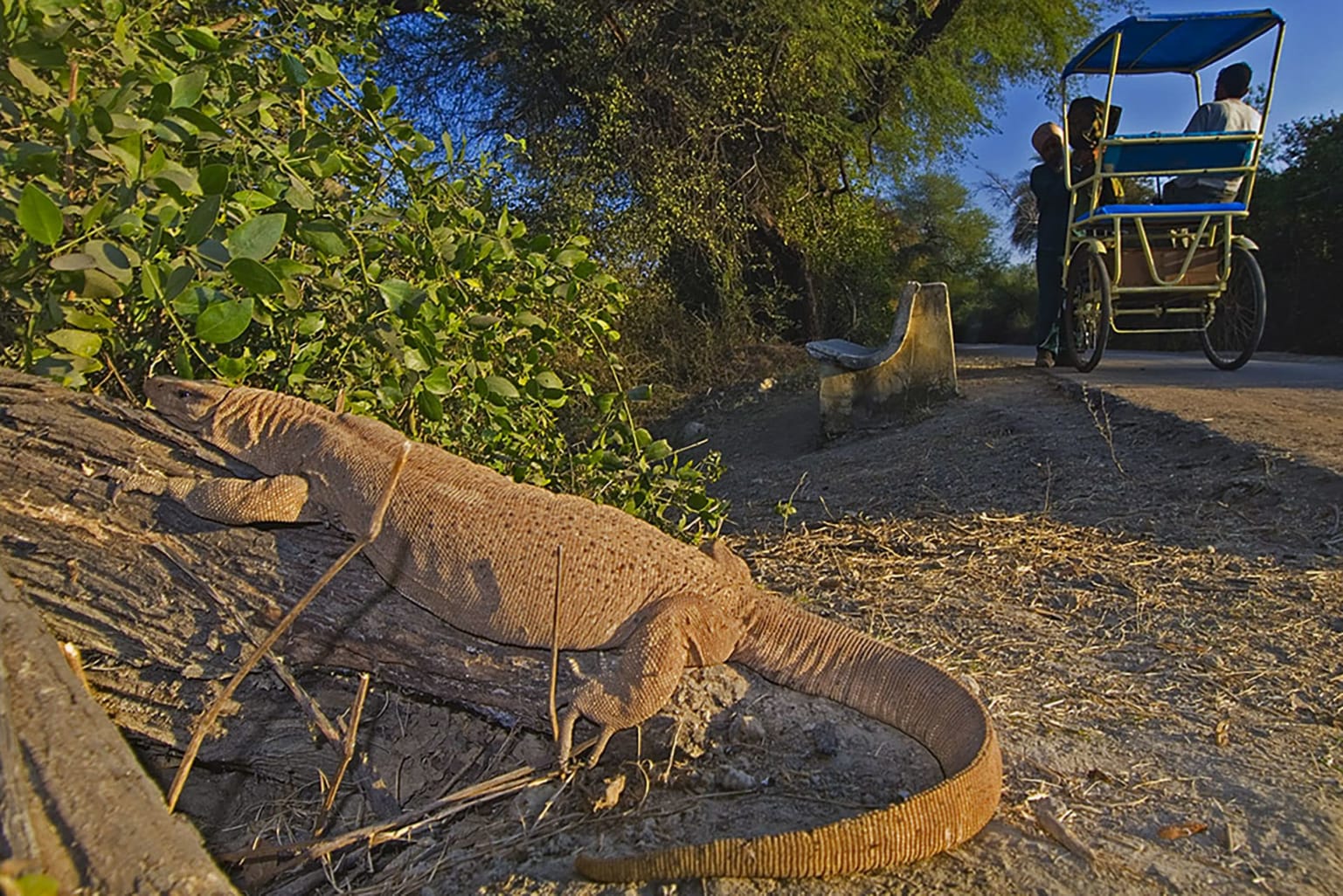 Listen to this article
•
15:34 min
Listen to this article
•
15:34 min
Few animals have inspired legends the way the Bengal monitor lizard (Varanus bengalensis) has. Superstition surrounds this animal. Some believe that eating its meat gives them superhuman strength and virility, others claim equally preposterously, that it can attack and kill cattle. There are other, more believable stories about the Bengal monitor lizard. Legend has it that the Maratha general Tanaji Malusare once used a monitor lizard to help him scale the wall of a fort.
However, this story has now evolved and speaks of how Shivaji (not Malusare) used hundreds of monitor lizards to get his armies over fort walls. In fact, it’s quite plausible that a monitor lizard could support the weight of a rope and a man. They are immensely strong and once inside a crevice could easily hold strong and help infiltrate an otherwise secure fortress.
The life of a Bengal monitor lizard begins with a clutch of between five and twenty eggs laid in a secure chamber underground. Often, monitor lizards use termite mounds or simply dig holes in the ground to find a place where they can make a chamber that will stay at a constant temperature and humidity.
If all goes well, most of these eggs hatch and the young wait a short while to absorb the remaining yolk before digging themselves out. Little jewels, neonate monitor lizards are more ornate than their adult counterparts. However, despite this different colouration, they can be incredibly cryptic in their natural surroundings. Young monitors feed on any small animal they can catch including scorpions, various insects and arthropods, small rodents, fish and even small snakes.

While hunting, monitor lizards rely a lot on sight. They also have relatively good hearing. Photo: Gerry Martin
Cover Photo: The monitor lizard is a formidable animal. It is surrounded by myth and legend because of its incredible ability to survive in harsh conditions. Photo: Dhritiman Mukherjee
They make quick dashes up their favourite tree when threatened. In fact they seem to like hiding up in trees, and can often be spotted coming out of the same tree hollow each day for weeks on end indicating a possible loyalty to small ranges as newborns. They grow rapidly in their first year and usually more than triple in size during this time. This is important, as it cuts down the long list of predators that could make a quick meal of baby monitors. After this, their growth slows down and they reach sexual maturity in about three years.
Bengal monitors, like many of their relatives, have amazing adaptations to help them survive in their habitats. Their powerful claws and feet allow them to dig through hard earth, including the compact and naturally cemented walls of termite mounds. These claws also help them tear flesh off carrion and larger prey as adults. Couple this with their laterally compressed and serrated teeth and you have a formidable predator.
As they grow, their diet changes, and they begin taking on larger prey. Bengal monitors can run at high speeds for significantly longer distances than most other reptiles and they use this ability to escape danger as well as to catch prey, which can include snakes, lizards, rodents, birds and anything else they can overcome. However, they will also often feed on carrion that they come across. Monitors have often been reported to dig up turtle and crocodile nests and feast on the eggs.

Interestingly, venomous snakes don’t seem to have any effect on monitor lizards. I have often convinced people not to chase off monitor lizards found around their homes and properties because of this vital reason. They feed on venomous snakes as well. Their ability (much like snakes) to head down burrows after rodents make them truly useful in human-dominated landscapes.
On the point of venom, recent research has pointed to the presence of venom in the saliva of many monitor lizard species; first found in the Komodo dragon (Varanus komodoensis) of Indonesia. To date, no work has been done on the Bengal monitor lizard yet. It certainly possesses venom, but nothing is known about its constitution, potency, and effect on humans. From the numerous bites that I have heard of, I’ve only once heard of any real venom-related symptom, where the person is reported to have died. However, colleagues and I were not convinced by the details of the case. Further, it does take a lot for a monitor to actually bite someone. All the bite cases (barring the one fatality) that I’ve heard of have been while people were handling or attempting to capture a lizard.
Before actually biting in defence, they will first try to escape and hide. If that isn’t an option, they hiss loudly, stand tall on all fours, puff up their bodies and throats, and lash out with their very powerful whip-like tails. Once captured, they struggle, scratch, and only then will they bite.

The skin of the Bengal monitor is really tough and serves to protect it from a lot of predators and damage in the harsh rocky and thorny terrain that the species seems to prefer. Sadly, this boon has turned to a curse in some locations in Western India, where the belly skin is used to make drums called kanjira. The lizard’s incredible strength for its size has led to beliefs that eating the meat transfers the strength (and virility) to humans and the oil, derived from boiling the body fat is believed to have strong healing powers. These baseless beliefs have caused a terrible decline in their population and examples of local extinctions of the species are seen all over India.
For this truly adaptable lizard, all we need to do to ensure its survival is leave them alone. In places where they aren’t hunted, monitor lizards are common even in cities and busy suburbs. In Ahmedabad, where they aren’t persecuted, Bengal monitors are still seen regularly in parks and people’s yards. In Sri Lanka, they are very common and even hang out like domestic animals near fish and meat shops.
With our country reportedly losing over 30 per cent of agricultural produce to rats and mice, we could use all the help we can get to combat this menace and the Bengal monitor could be a great ally. Besides, how great would it be to have miniature dragons roaming free around us? The Bengal monitor lizard has been an integral part of much of our history and culture. We now need to ensure that it remains a part of our future.






